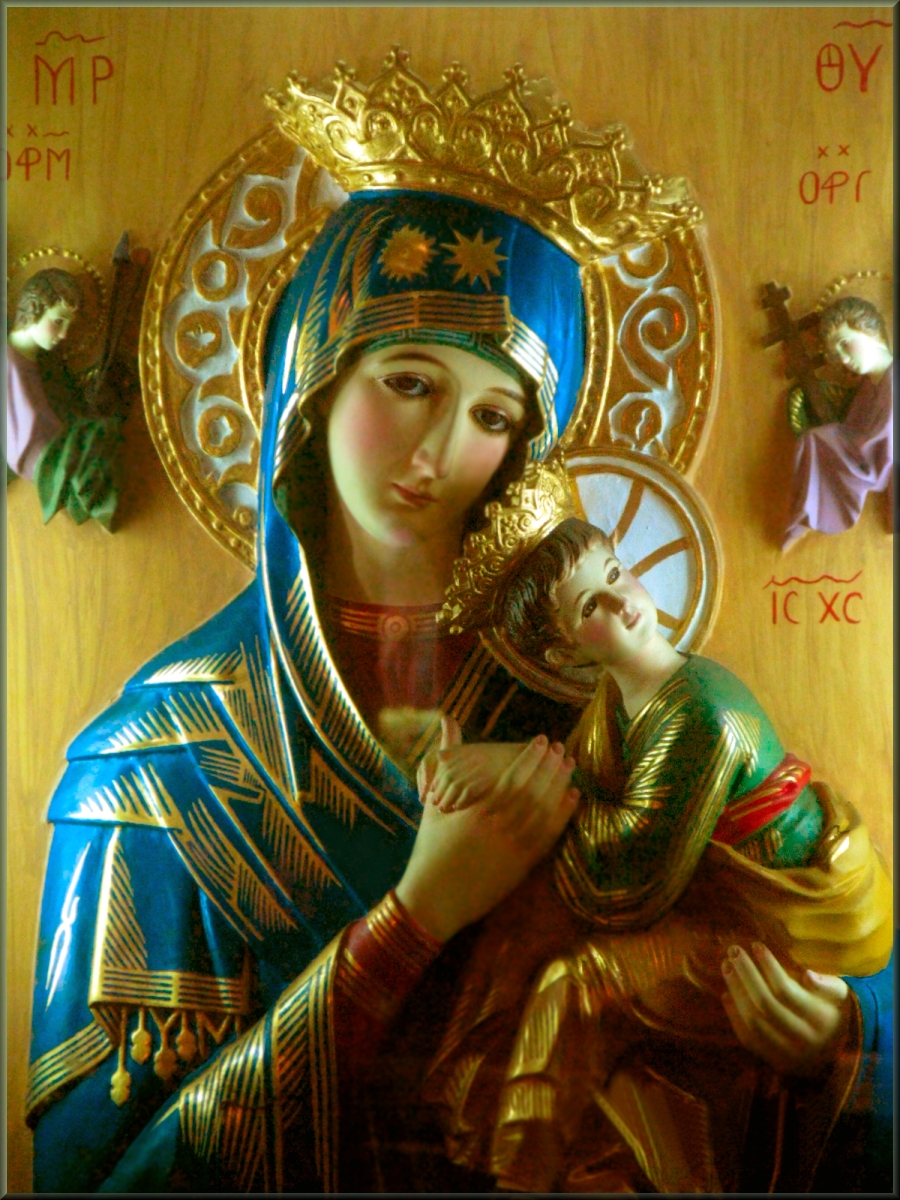IV. FAVORS AND GRACES
The holy image of the Mother of Perpetual Help was returned to public veneration on April 26, 1866. On that day a solemn procession was held, carrying the icon from the Basilica of St. Mary Major to the Church of St. Alphonsus:
“On one of the streets along the rout of the procession, there lived a seriously ill 4 year old boy who had suffered with a gastric infection and brain hemorrhages for 20 days. He was near death. When the icon passed in front of his house, his mother opened the window and presented him to the Virgin, exclaiming with tears: “O merciful Mother, heal my son or take him with you to Paradise!” Her prayer was not in vain; that same day the child got better and a few days later was completely cured.
“In another house there was an 8 year old girl that had suffered from paralysis of the legs for 4 years and could barely move them. When the icon passed her house, her mother also asked the Virgin to heal her daughter. At that very moment the girl recovered partial use of her legs. Afterwards, her mother took her to the Church of St. Alphonsus and presented her to Our Lady with great confidence: “O Mother, finish now what you have begun!” To the wonder of those present, her daughter stood up and began to walk on her own.”
It is understandable that the faithful began to speak of “the miraculous picture” of Our Lady of Perpetual help. What that term means depends on the intentions and circumstances of each person who uses it. But the fact is that in order to describe Mary’s favorable answer to their prayers, there is a constant expression, “miraculous intercession.” And it is and has been used so often one is predisposed to think that the Virgin of the icon is inclined to grant extraordinary favors. We do not use the term “miracle” like that of the ones performed by Christ in the Gospels. Here we use it in the wider sense that the faithful through the centuries have used it, that is, a miracle is seen as a favor or grace asked for and received in inner peace.
